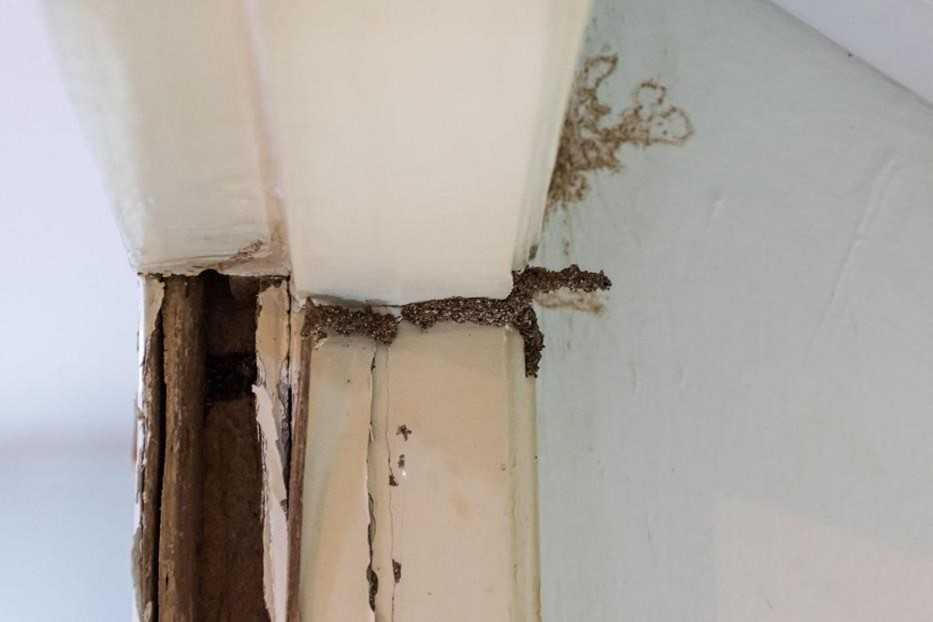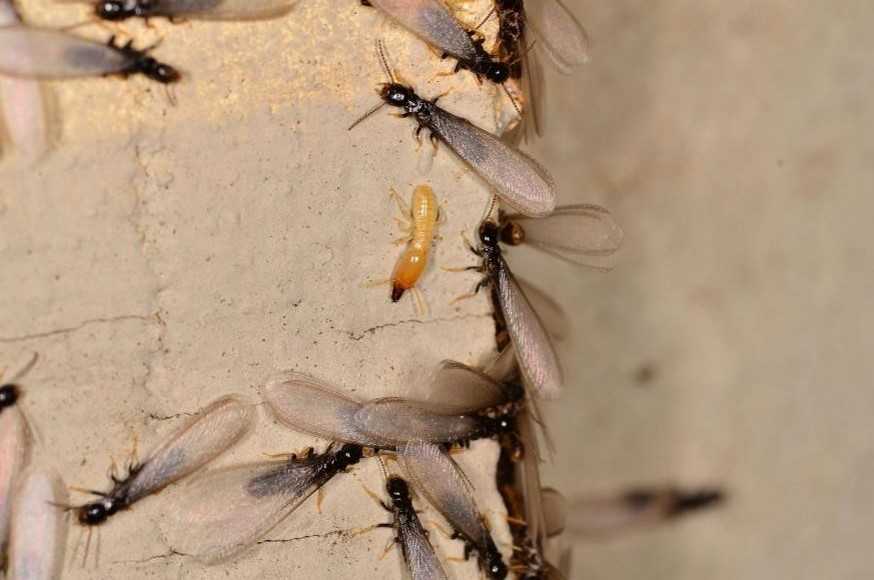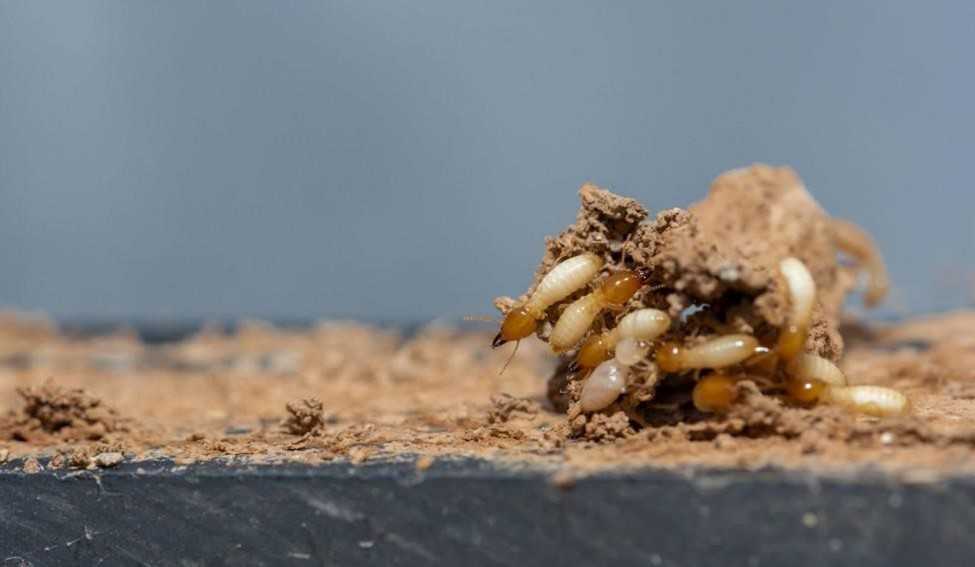After years of work and serious investment, you anticipate that your home has increased or maintained its value—until you make a terrible discovery. While you were expending blood, sweat, tears, and big bucks to manage your home’s value, termites were putting in some hard work of their own—discovering and feasting on your home. At this point, you’re forced to take on extensive repair costs and significantly lower your current evaluation of your house’s value.
That sounds terrible, right? Fortunately, you might be able to avert this crisis, or at least get your termite problem under control to limit the damage. At PURCOR, we have a variety of termite treatment options available to help you protect your home. Contact us to get started on the next steps.
How Do I Know If I Have Termites? What Can Be Done?
You may not know if you have termites. After all, they are pretty small, and if you have them, they are likely busy burrowing into some of your home structures.
If you’re worried about termites and want to get ahead of the game, you can always contact our pest control specialists for an evaluation. During an inspection, we can evaluate any existing termite (or other pest) issues and can help you eliminate or prevent damage to your home.
What Are the Signs of a Termite Problem?

There are a few general signs you might notice if you have a termite problem, including the following:
- Mudlike tubes or clustered structures
- Sagging, crumbling, or hole-filled wood
- Unusual warping of windows or doors
- Strange pinholes (exit holes) or unusual textures on walls
- Tiny brown or black pellets (termite droppings)
- Evidence of shed termite wings
Note that some of these signs can be caused by other issues, so they may not be proof of termites. However, if you’ve noticed a few signs, see termites in your home, or feel like your house’s wooden structures are deteriorating quickly, you should have an inspection done. While you’re on the lookout for termites, look for ones with wings. These are reproductive “swarmers” sent out by an established colony to start new colonies. Seeing swarmers is unfortunately often a sign that you already have a fairly established colony in your home.
Is There Anywhere Specific I Should Check for Termites?
If you’re up to the task and have an open basement, you can do some searching around for termites on your own. To do this, shine a flashlight around the structures and look for mudlike clusters or tube formations. Pay special attention to the area around your house’s sill plate. It is common to see termite “mud” in this area.
Keep in mind, however, that not seeing tunnels or termites doesn’t necessarily mean you don’t have them. Termites often burrow into areas you can’t see. Schedule a termite inspection with our experienced specialists to help discover any that might be hiding.
How Can Termites Destroy Your Home’s Value?
Termites eat cellulose, which is found in wood. That’s why they often discover our homes during searches for food and start snacking. Unfortunately, depending on what wood pieces they eat, they can cause catastrophic damage to your house.
How Termites in Your Home Can Cause Direct Damage
Typically smaller than an inch, termites can’t take huge individual bites out of your home’s wooden structures. However, when an entire colony feasts on your home, the damage starts to stack up and may impact your home’s appearance and/or structural integrity. If you don’t happen to have insurance with termite-related coverage, your termite problem could also become a huge financial burden.
If you’re lucky, your termite colony might ruin easy-to-replace wood like floorboards. If you’re not, however, it might destroy crucial areas of your home’s structure. When a termite colony causes structural damage to a home, costs to repair the damage can quickly go up into the thousands, and that’s not including the time and hassle of arranging for repairs and construction.
Additional Costs of Repair From Termite Inspection/Work
When you’re considering the costs of termite damage repair, don’t overlook the expense of repairing damages caused during the evaluation or treatment processes. If pest control specialists can’t find your termites, they might need to do things like tear down drywall to find the colony. If this has to be done, you will need to also take on the costs of repairing those damages. Fortunately, PURCOR has a few ways of determining if you have termites without causing home damage, so we can help you avoid these expenses.
Even if you don’t find any termites currently in your home, we recommend proactive termite treatments—regardless if you’re selling your home or keeping it. Proactive termite treatments are almost always less expensive than the cost it takes to get rid of termites that are already there. At PURCOR, our proactive termite treatment options include our ADVANCE Termite Baiting System as well as liquid treatment.
How Do You Get Equity Out of Your House?
Equity, the difference between the current value of your home and the remaining amount owed for your home loan, is likely a sizable financial asset for you and your family. In many cases, you can take equity out of your house to liquefy this existing asset into cash you can use. The most obvious option for getting equity out of your house is to sell it. However, there are a few other alternatives, such as taking out a second mortgage or doing cash-out refinancing. The best method for your situation will depend on your current financial needs, among other factors. Consulting with a financial adviser can help you sort through some of these options.
Regardless of the financial method you use to get equity out of your house, you will need to know your home’s current value to calculate your equity. If you are looking to sell your home, having an accurate understanding of its value will mean fewer surprises when it comes time to get results from the appraiser. That includes pests such as termites, which can pose a huge problem to the equity in your home.
What Is Sweat Equity?
When talking about home value, you might hear the term “sweat equity.” Sweat equity is essentially the increase in value generated from your effort, time, and hard work that is not otherwise accounted for in your construction or renovation or supplies costs. Sweat equity can seriously increase your home’s value and your calculated home equity.
Can You Sell a Home With Termites or Related Damage?

Disclosure laws vary by state, so the requirements for what you have to disclose depend on where you live. Even if you aren’t specifically required to disclose a current or past termite issue, it is generally wise to be as transparent as possible to help protect yourself legally. Plus, the buyer is likely to find the issue during a home inspection.
Keep in mind that the discovery of termites at the beginning of the sale process may mean the buyer will expect you to cover pest control and repair costs. If you are opposed to covering these costs, you might need to shift your expectations for the sale price lower.
There Are Termites in My Home. What Happens Next?
If there are termites in your home, PURCOR’s pest control experts can assess the colony’s size and talk you through the options for termite control. Even if we don’t discover termites in your home, we can assess how conducive your home is for termites and talk you through the preventive measures you can take.
Taking Control of Your Termite Problem With PURCOR
Whether you’re looking to take out equity on your home now or decades from now, protecting it from termites is crucial for protecting your sweat equity and getting the most out of your investment. Give us a call or fill out our contact form to get started with a free estimate. From there, we can help you protect your home from termite damage.
Have a different pest problem but can’t quite put a finger on what it is? Check our Pest Library or give us a call to figure out what is crawling, flying, or running around your home!
"*" indicates required fields
"*" indicates required fields




